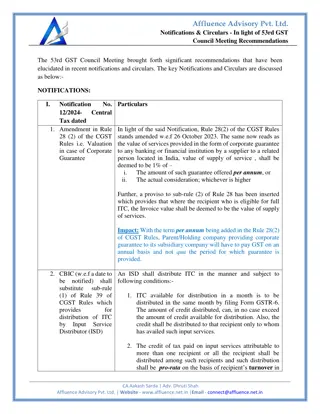
Understanding Phagocytosis Process in Immune Response
Phagocytosis is a vital process where phagocytes engulf harmful cells, particles, or pathogens to protect the body. Learn about the types of phagocytic cells, steps involved in phagocytosis, and the role of recognition, inflammation, and chemotaxis in this immune response mechanism.
Download Presentation

Please find below an Image/Link to download the presentation.
The content on the website is provided AS IS for your information and personal use only. It may not be sold, licensed, or shared on other websites without obtaining consent from the author. If you encounter any issues during the download, it is possible that the publisher has removed the file from their server.
You are allowed to download the files provided on this website for personal or commercial use, subject to the condition that they are used lawfully. All files are the property of their respective owners.
The content on the website is provided AS IS for your information and personal use only. It may not be sold, licensed, or shared on other websites without obtaining consent from the author.
E N D
Presentation Transcript
Phagocytosis Phagocytosis Definition: It refers to the process by which certain living cells called phagocytes engulf other cells, particles , pathogens( bacteria or viruses), or infected cells. The phagocytes engulf cells, lyse them with lytic enzymes, and destruct them. It protects the body by ingesting harmful pathogens like bacteria or viruses or infected cells and killing them.
The phagocytic cells: Two types of the phagocytic cells: A. Either monocytes and its derivatives or B. The neutrophils.
The phagocytic cells A.-Monocytes and their derivatives which are: 1. Monocytes in blood. 2. Dendritic cells in skin, surrounding tissues, and lymph nodes. 3. Kupfer cells in the liver. 4. Alveolar macrophages in the lung. 5 Microglial cells in the brain. 6. Osteoclast in bones 7. Synovial A cells in joints. 8. Mesengial phagocytes in kidneys. 9. Langerhan s cells in skin. 10.. Macrophages in the peripheral tissues. B. The neutrophils
Steps of phagocytosis: Steps of phagocytosis: 1. Recognition of the foreign body. 2. Inflammation. 3. Chemotaxis. 4. Adherence. 5.Engulfment.( Endocytosis or pinocytosis). 6. Formation of phagosome. 7. Formation of phagolysosome (fusion of phagosome with the lysosome). 8. killing and digesting of the microorganism. 9. Disposal and presentation.
Recognition: Recognition: This can take place by interaction of : The pattern recognition receptors (PRRs) and The pathogen associated molecular patterns(PAMPs).
Inflammation: Inflammation: After recognition of the foreign body, the inflammatory process starting by secretion of the inflammatory mediators by the mast cells and basophils: Mast cells are resident in tissues near the site of infection. While the basophils are circulating in blood. The inflammatory mediators cause the following: 1. Increase blood supply to the area of infection. 2. Increase vascular permeability due to retraction of the endothelial cells. 3. Migration of large molecules to reach the site of infection (C5a,C3a). 4. Migration of the leukocytes: in early stage the neutrophils and in late stage the macrophages. This process is controlled by the C5a mainly ( the chemotaxin).
Chemotaxis: Chemotaxis: Chemotaxis of the phagocytic cells can occur by secretion of: 1. C5a . 2. C3a. 3. Acute phase proteins. This process leads to the migration of the phagocytic cells ( the macrophages and the neutrophils) to the site of infection.
Adherence: Adherence: Adherence means the adherence of the microorganism to the cell membrane of the phagocytic cells which leads to the engulfment of the microorganism by the phagocytic cells. The adherence takes place by one or more of the following opsonizing factors (opsonization): 1. C-reactive protein. 2. C3b. 3. Fc-receptors. 4. Hydrophobic forces. 5. PRRs-PAMPs
Engulfment: Engulfment: In this process engulfment of the foreign body happen by the bulging of the cell membrane of the phagocytic cells either by: The Endocytosis or The Pinocytosis. In this process the phagosome is formed which is a vacuole containing the ingested foreign body. Then fusion of the phagosome occurs with the lysosome to form: The phagolysosome
Killing, Digestion , Disposal, and Presentation Killing, Digestion , Disposal, and Presentation of part of the foreign body of part of the foreign body After formation of the phagolysosome killing and lysis of the foreign body takes place. The killing process takes place by the effect of: 1. The oxygen radicals like nitrous oxide and hydrogen peroxide. 2. The lysis by the lysosomal hydrolytic enzymes.
Presentation and disposal of the antigens: Presentation and disposal of the antigens: The final stage of the phagocytosis is: 1. The presentation of the antigen to the T-lymphocytes by the interaction between the antigen and T-cell receptors and MHC molecules. 2. Also presentation of the antigen to the B-cells will occur 3. Disposal of the undigested part of the foreign body will be later disposed out of the phagocytic cells.






















